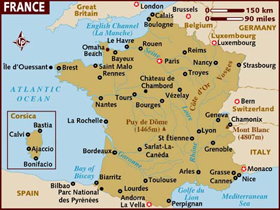Pharmacoeconomic Guidelines: France
Country/Region: France

PE Guidelines
Choices in Methods for Economic Evaluation (October 2012) (French Version 2011)
PDF in English; PDF in French
Choices in methods for Budget Impact Analysis (November 2016)
PDF in French
PE Guidelines Source:
Additional Information:
Information current as of Wednesday, February 12, 2020
Key Features
| Key Features | |
|---|---|
| Type of Guidelines | PE Guidelines |
| Title and year of the document | Choices in Methods for Economic Evaluation (October 2012) (French Version 2011) |
| Affiliation of authors | The members of the Economic Evaluation and Public Health Department in collaboration with the members of the CEESP economists’ technical group |
| Purpose of the document | Provide methodological guide to set out the economic evaluation methods which HAS favours when determining the efficiency of a specific health intervention |
| Standard reporting format included | Yes |
| Disclosure | Yes |
| Target audience of funding/ author's interests | Healthcare professionals and institutional decision-makers |
| Perspective | The reference case analysis adopts a collective perspective (all health care funders and population whose health is affected) that is sufficiently broad to take into account all stakeholders concerned by the treatments studied, in the French health system. |
| Indication | Approved indication |
| Target population | All the individuals concerned, directly or indirectly by the interventions studied. Any exclusion or particular subgroups of the population is to be justified. |
| Subgroup analysis | Yes |
| Choice of comparator | All interventions competing with the intervention studied are identified. The choice of interventions included as comparator is the responsibility of the author, and is justified. Procedures and technologies regularly used in daily practice, even if they are used without “EC” marking and drugs that have not obtained marketing authorisation are to be included in the reference case analysis. |
| Time horizon | A time horizon which is long enough to reflect all expected differences in costs and health effects. |
| Assumptions required | Yes |
| Preferred analytical technique | CUA and/or CEA (if the intervention is expected to have an important impact on health-related quality of life, CUA must be used, always accompanied by a CEA that uses length of life as health outcome) |
| Costs to be included | Economic evaluation at HAS is based on the analysis of production costs. Only direct costs are taken into account in reference case analysis (indirect costs could be reported separately if considered relevant by the author). Direct costs take into account production factors, i.e. the resources consumed (goods, services and time) to produce the interventions being studied. In particular, these include the consumption of hospital and outpatient care, medical goods, transport, the organisation of a healthcare programme or the time spent by people undergoing the interventions and the time spent by their carers. |
| Source of costs | The identification, measurement and valuation of costs should be consistent with the French collective perspective - For hospital costs: valuation of the cost of producing inpatient stays using preferently the National costs study (ENCC) - For outpatient costs: French health insurance tariffs |
| Modeling | Yes |
| Systematic review of evidences | Yes |
| Preference for effectiveness over efficacy | Unspecified |
| Preferred outcome measure | In a cost-effectiveness analysis, length of life is the preferred health outcome, and in a cost-utility analysis, the health outcome is the patient’s length of life weighted by health-related quality of life and is expressed in QALYs. |
| Preferred method to derive utility | It is recommended to use health status classification systems for which validated preference-based scores are available in France (EQ-5D and HUI3). Two accepted choice-based valuation methods are the Standard Gamble (SG) and the Time Trade-Off (TTO). |
| Equity issues stated | No |
| Discounting costs | The reference case analysis uses the French social discount rate which has been set at 4% since 2005, for time horizons of less than 30 years with a reduction of up to 2% thereafter. |
| Discounting outcomes | The reference case analysis uses the French social discount rate which has been set at 4% since 2005, for time horizons of less than 30 years with a reduction of up to 2% thereafter. |
| Sensitivity analysis-parameters and range | The choice of parameters subject to a sensitivity analysis and the range of values used to test these parameters are presented and justified. |
| Sensitivity analysis-methods | A probabilistic sensitivity analysis is preferred when the theoretical or empirical distributions of the parameters are known or can be estimated. An univariate, deterministic sensitivity analysis is always made on parameters likely to influence the results of the model. |
| Presenting results | The economic evaluation is presented in a clear, structured and detailed manner to allow the reader to make a critical judgement on the validity of the analysis. |
| Incremental analysis | Yes |
| Total costs vs effectiveness (cost/effectiveness ratio) | Health interventions plotted on the efficiency frontier are identified and an incremental cost-effectiveness ratio (ICER) calculated for each one, by detailing the incremental health effects and costs. All interventions are represented in the cost-effectiveness plan to inform health care decision-making. |
| Portability of results (Generalizability) | French data are preferred in the reference case analysis. When foreign data have to be used, a rigorous analysis is made of their relevance to the French context. |
| Financial impact analysis | Yes |
| Mandatory or recommended or voluntary | Mandatory under certain conditions |
Acknowledgement: